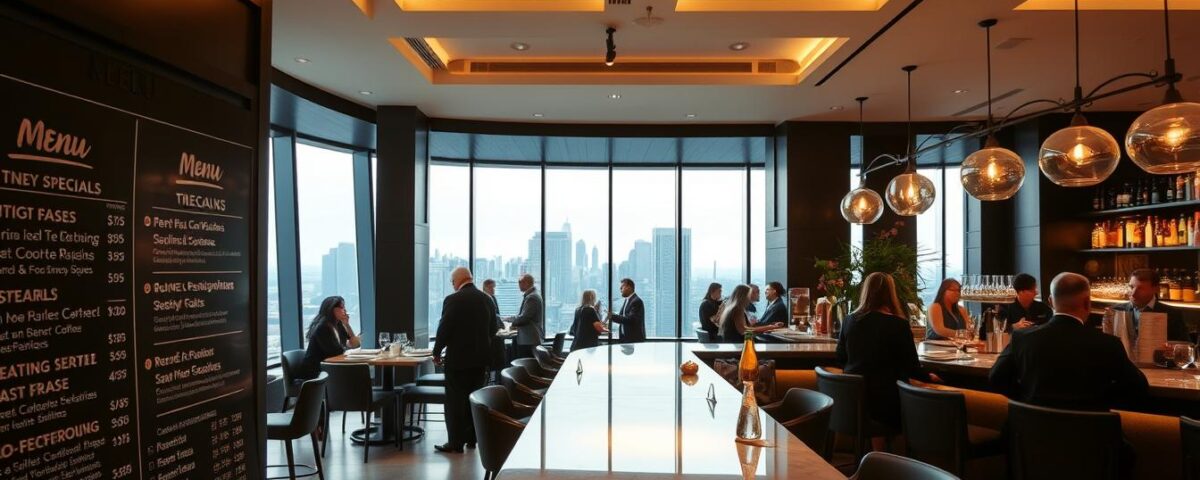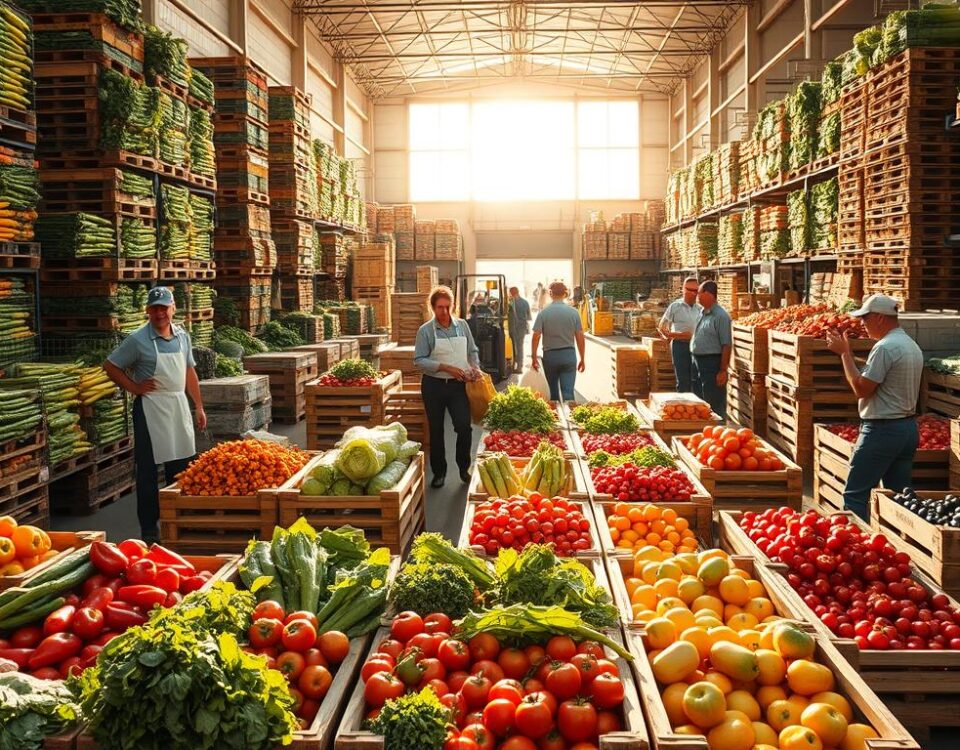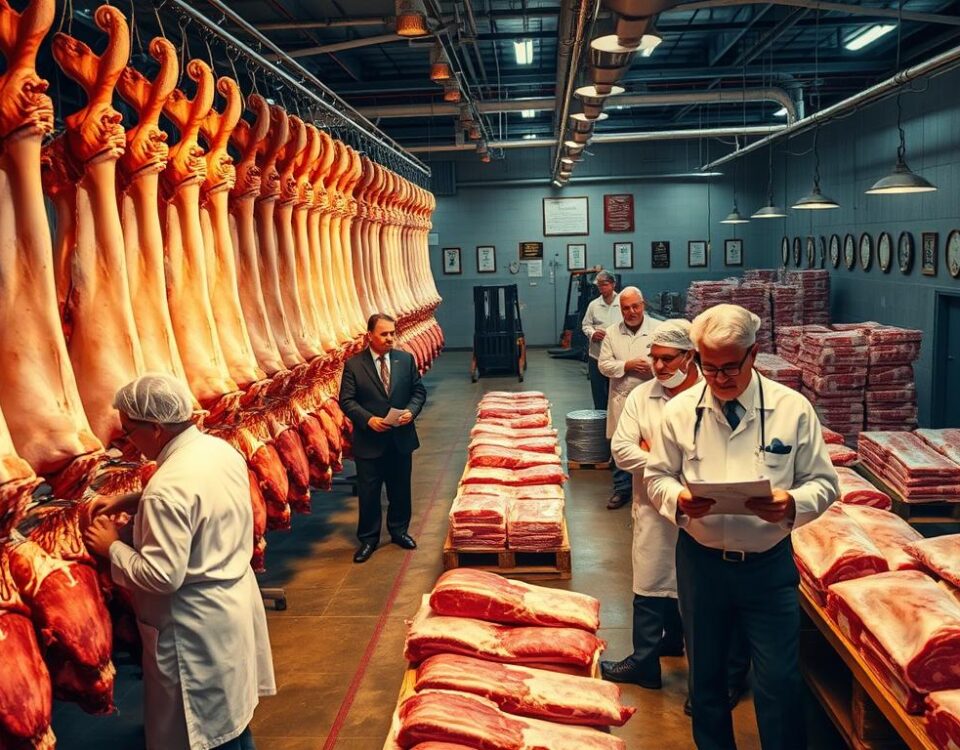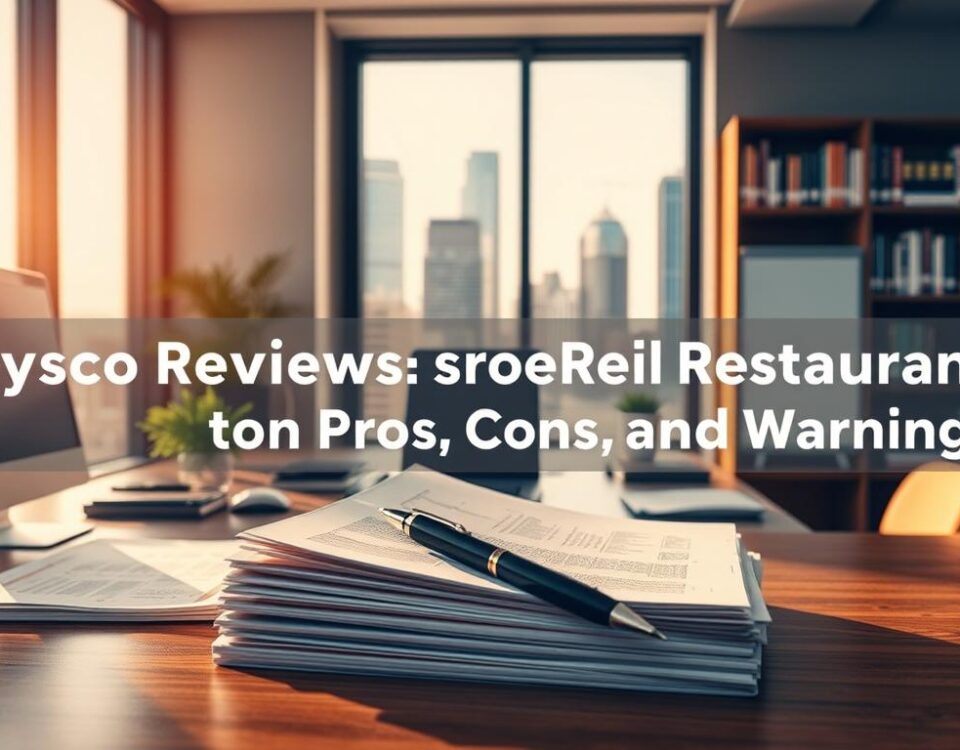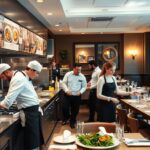
20 Proven Ways to Increase Restaurant Sales Fast
July 14, 2025
6 Hidden Food Safety Risks That Could Jeopardize Your Restaurant
July 15, 2025As a restaurant owner, I’ve seen firsthand how challenging it can be to attract and retain customers in today’s competitive food industry. With the rise of online review sites and social media, the way we market our restaurants has changed dramatically. Did you know that nearly 60% of diners research a restaurant online before visiting? This statistic highlights the importance of having a solid brand identity and effective marketing strategy in place.
Creating a comprehensive restaurant marketing plan is crucial for understanding your business’s competitive advantages and identifying opportunities to drive revenue growth. In this guide, we’ll explore creative ideas that work, from fundamental marketing concepts to innovative promotional strategies, helping you build a loyal customer base and stay ahead of the competition.
Key Takeaways
- Develop a tailored marketing strategy to attract and retain customers.
- Build a strong brand identity that resonates with your target audience.
- Leverage digital marketing channels to reach new customers and drive sales.
- Create engaging promotional campaigns to foster customer loyalty.
- Monitor and adjust your marketing plan to optimize results.
Understanding Restaurant Marketing Fundamentals
Developing a successful restaurant marketing strategy requires a deep understanding of what sets your establishment apart. In the competitive world of restaurants, effective marketing is crucial for attracting and retaining customers.
What Makes Restaurant Marketing Unique
Restaurant marketing differs significantly from other industries due to its sensory and experiential nature. The dining experience encompasses not just the quality of food, but also the ambiance, service, and overall atmosphere. This unique blend of tangible and intangible elements creates both opportunities and challenges for marketers. For instance, the emotional and social aspects of dining out mean that restaurant marketing must often appeal to customers’ feelings and memories, rather than just promoting a product.
The Four Ps of Restaurant Marketing
The Four Ps marketing model—Product, Price, Place, and Promotion—is particularly relevant for restaurants. It provides a framework for showcasing your food, pricing strategy, location, and promotional offers. Here’s how the Four Ps apply to restaurant marketing:
| The Four Ps | Application in Restaurant Marketing |
|---|---|
| Product | Menu items and food quality that meet customer expectations and preferences. |
| Price | Pricing strategy that balances profitability with customer perceived value. |
| Place | Location and atmosphere of the restaurant, including ambiance and service. |
| Promotion | Advertising and promotional activities that drive business and engage customers. |
By understanding and effectively implementing the Four Ps, restaurants can create a cohesive marketing approach that resonates with their target audience and sets them apart in a competitive market.
Creating Your Restaurant Marketing Plan
Developing a comprehensive restaurant marketing plan is crucial for the success of your business. This plan will serve as a roadmap, guiding your marketing efforts and helping you achieve your goals.
Setting Clear Marketing Goals and KPIs
To create an effective marketing plan, you need to set SMART (Specific, Measurable, Achievable, Relevant, Time-bound) marketing goals. This involves identifying key performance indicators (KPIs) that will help track your progress. For example, you might aim to increase sales by 10% within the next quarter or boost your social media following by 20% within the next six months.
| Marketing Goal | KPI | Target |
|---|---|---|
| Increase Sales | Revenue Growth | 10% in 3 months |
| Boost Social Media Following | Follower Growth Rate | 20% in 6 months |
Identifying Your Target Audience
Understanding your target audience is vital for creating a successful marketing strategy. This involves creating customer personas that represent your ideal diners. Consider demographics, preferences, and behaviors when developing these personas. For instance, you might identify a persona as a young professional who values sustainability and is active on social media.
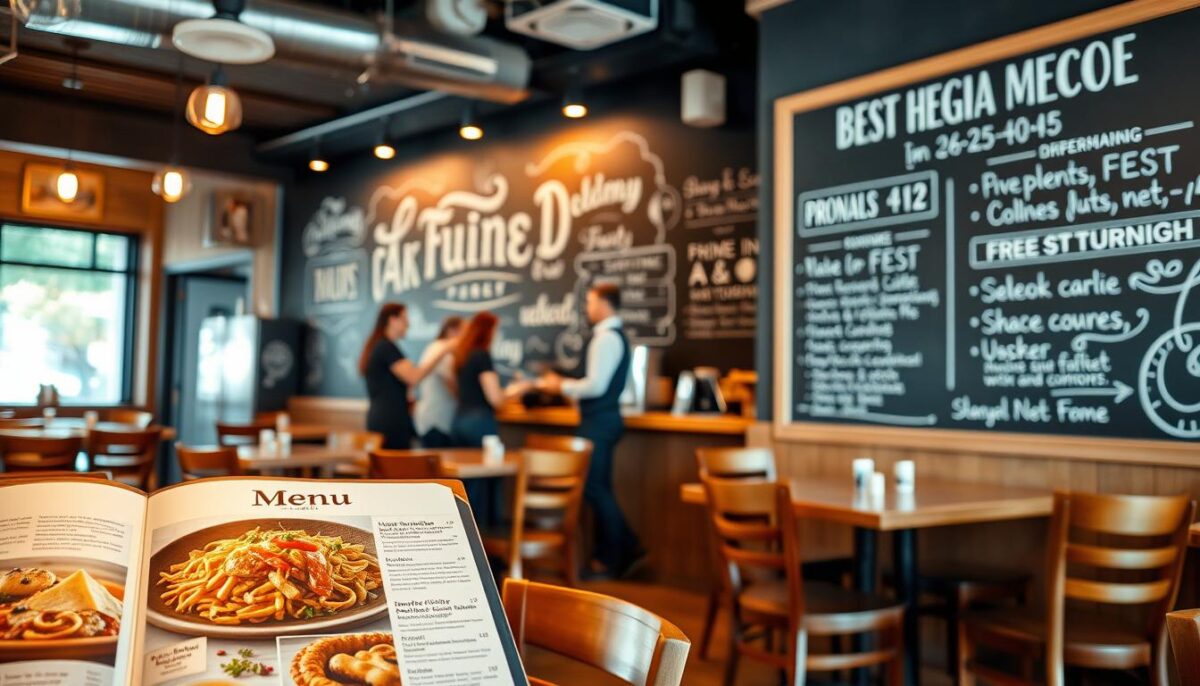
Conducting a Competitive Analysis
A thorough competitive analysis helps you understand your restaurant’s position in the market and identify opportunities for differentiation. Analyze your competitors’ strengths, weaknesses, and marketing strategies. Use a SWOT analysis (Strengths, Weaknesses, Opportunities, Threats) to inform your marketing strategy and make better business decisions.
By following these steps and creating a comprehensive marketing plan, you’ll be well on your way to achieving your restaurant’s marketing goals and establishing a strong presence in the market.
Building Your Restaurant’s Online Presence
In today’s digital landscape, a robust online presence is crucial for restaurants to attract and retain customers. With 89% of people researching dining options on their phones, having a strong digital footprint is no longer optional.
Optimizing Your Google Business Profile
Your Google Business Profile is often the first point of contact for potential customers. To optimize it, add high-quality photos, update your business information, and encourage customer reviews. Google reports that customers are 70% more likely to visit businesses with a complete Business Profile.
Creating an Effective Restaurant Website
An effective restaurant website should include mobile optimization, online ordering capabilities, and compelling visual content. This will not only attract more customers but also provide them with a seamless user experience.
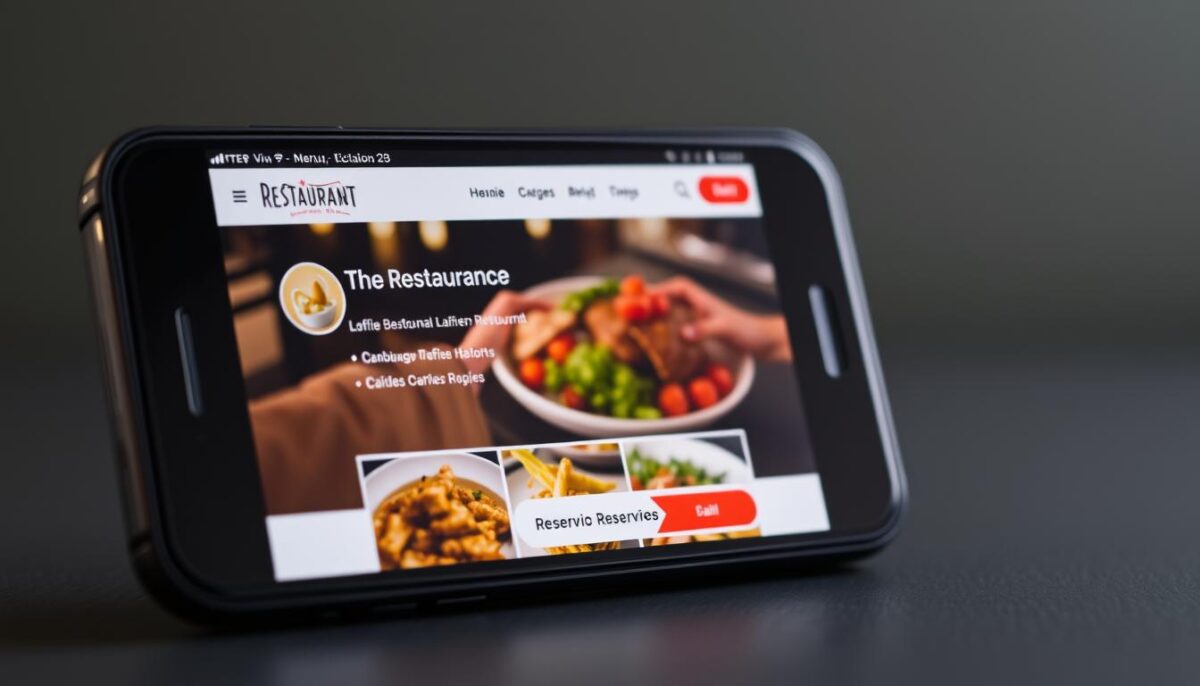
Implementing Local SEO Strategies
To improve your restaurant’s visibility in local search results, target location-based keywords and build local citations. Maintaining consistent NAP (Name, Address, Phone) information across all online platforms is also crucial for boosting local search rankings.
By implementing these strategies, you can significantly enhance your restaurant’s online presence, attract more customers, and drive sales.
Social Media Marketing for Restaurants
Social media platforms offer a visually engaging way for restaurants to showcase their offerings and connect with potential customers. Because most popular social content is visual, it’s a convenient way to show off new menu items, share the restaurant vibe, and personalize marketing efforts.
Choosing the Right Platforms for Your Restaurant
To maximize impact, it’s crucial to identify the most suitable social media platforms for your restaurant concept and target audience. Focus on image- and video-based platforms like Instagram and Facebook, which are ideal for showcasing culinary delights.
Creating Engaging Food Content
Creating engaging food content is vital to enticing followers and driving foot traffic. Use high-quality food photography and consider behind-the-scenes content, chef interviews, or customer experiences to create a compelling narrative.
Working with Local Influencers
Partnering with local influencers can significantly expand your reach and credibility. Identify influencers who align with your brand values and target audience, and collaborate on content that showcases your restaurant’s unique offerings.
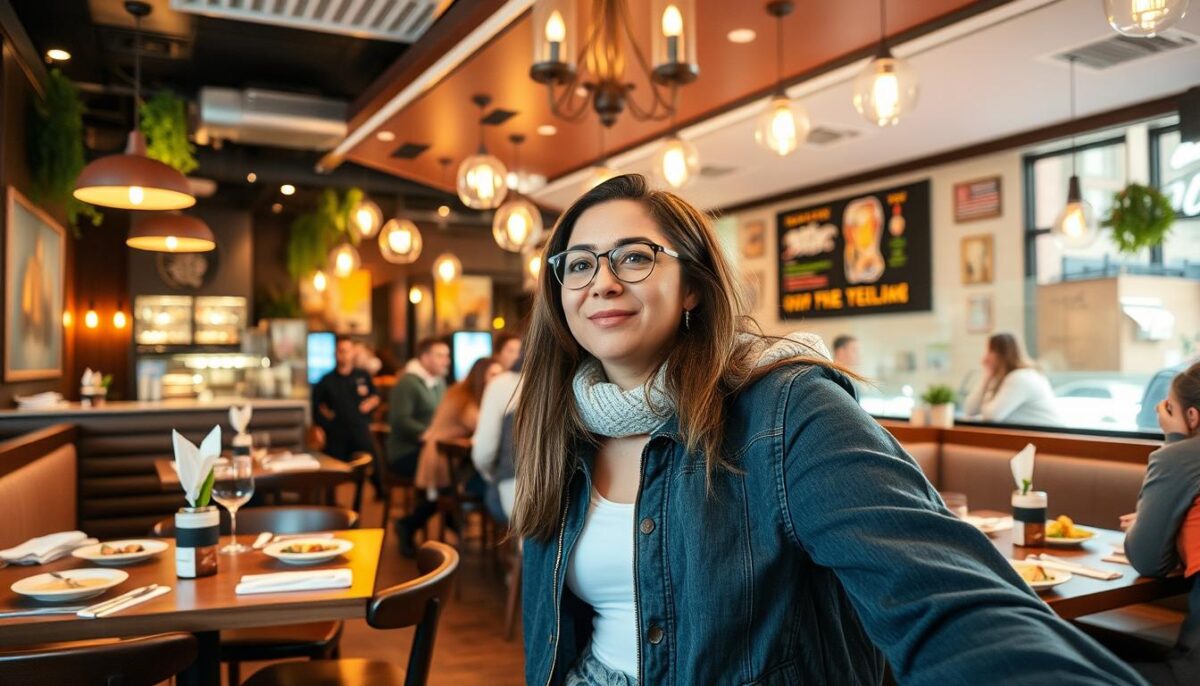
By implementing these strategies, restaurants can effectively leverage social media to enhance their marketing efforts, engage with customers, and ultimately drive sales.
Email and SMS Marketing Strategies
Direct marketing channels like email and SMS are crucial for restaurants aiming to boost customer loyalty. With a 98% open rate, SMS marketing can make your restaurant top of mind when it’s time to eat.
Building and Growing Your Subscriber List
To leverage email and SMS marketing, you first need to build your subscriber list. This can be done through in-restaurant signups, website opt-ins, and offering special incentives for joining. The key is to make it easy and appealing for customers to subscribe.
Creating Compelling Campaigns
Once you have a list, creating compelling campaigns is the next step. This involves crafting effective subject lines, message content, and calls-to-action that drive action. Personalization is key; segment your list to deliver more relevant messages based on customer preferences and behaviors.
Timing and Frequency Best Practices
Timing and frequency are critical to the success of your marketing campaigns. You need to find a balance that maximizes open rates and engagement without overwhelming your subscribers. Experiment with different times and frequencies to find what works best for your restaurant.
By implementing these email and SMS marketing strategies, restaurants can stay connected with their customers in a direct and personal way, driving repeat business and enhancing customer loyalty.
Restaurant Marketing Guide to Customer Loyalty Programs
A customer loyalty program is an effective tool for restaurants to show appreciation to their customers, making them feel valued and recognized. By rewarding loyalty, restaurants can boost customer retention and engagement, ultimately driving repeat business and increasing customer lifetime value.
Types of Loyalty Programs That Work for Restaurants
There are several types of loyalty programs that can be effective for restaurants, including:
- Points-based systems: Customers earn points for every visit or purchase, redeemable for rewards.
- Tiered rewards: Customers progress through tiers based on their spending or visit frequency, unlocking better rewards.
- Punch cards: Traditional punch cards that reward customers after a certain number of visits or purchases.
- Membership programs: Exclusive programs offering members special benefits, discounts, or services.
Each type has its benefits, and the best choice depends on the restaurant’s specific needs and customer base.
Implementing and Promoting Your Program
To successfully implement a loyalty program, staff training is crucial to ensure that all employees understand the program and can effectively communicate it to customers. Technology integration is also vital, using software that can track customer purchases and reward points efficiently.
Promoting your loyalty program both in-restaurant and through marketing channels is essential to maximize participation. This can include signage, social media campaigns, and email marketing. By effectively promoting your program, you can increase customer engagement and drive repeat business.
Effective Promotional Events and Special Offers
To drive foot traffic and boost sales, restaurants can leverage promotional events and special offers that create a buzz around their brand. These events not only attract new customers but also encourage repeat visits from existing ones, fostering a loyal customer base.
Seasonal and Holiday Promotions
Capitalizing on seasonal and holiday events can significantly enhance your restaurant’s appeal. For instance, offering special menus or discounts during holidays like Valentine’s Day or Thanksgiving can attract more customers. Seasonal promotions help create a timely and relevant marketing opportunity that resonates with your target audience.
Hosting Special Events and Theme Nights
Hosting special events like trivia nights, live music performances, or charity fundraisers can create a unique experience for your customers. These events go beyond just serving food and drinks; they foster a memorable experience that encourages customers to return. By aligning these events with your restaurant’s concept, you can attract both regulars and new customers looking for a fun experience.
Limited-Time Menu Items and Offers
Introducing limited-time menu items or special offers can create a sense of urgency, encouraging customers to visit your restaurant before they miss out. This strategy not only drives sales but also keeps your menu fresh and exciting, attracting both new and repeat customers. By promoting these offers through your marketing channels, you can create a buzz around your restaurant and increase foot traffic.
By incorporating these strategies into your marketing plan, you can measure the success of your promotional events and special offers, determining which ones are worth repeating and refining your approach over time.
Local Community Marketing Strategies
To stand out in a competitive market, restaurants must adopt effective local community marketing strategies. One of the most important reasons restaurants should engage in local marketing is to create meaningful relationships with their community. When a restaurant participates in local events or partners with local businesses, it becomes part of the neighborhood’s fabric.

Partnering with Local Businesses
Partnering with complementary local businesses can create cross-promotional opportunities that benefit both parties. For instance, a restaurant could partner with a nearby yoga studio to offer a “Healthy Dinner” promotion, where participants receive a discount on their meal after attending a yoga class. This not only drives business to both establishments but also fosters a sense of community.
Sponsoring Community Events
Sponsoring community events is another effective way to build goodwill and increase brand visibility. Restaurants can sponsor local charity events, sports teams, or cultural festivals. By doing so, they demonstrate their commitment to the community, which can lead to increased customer loyalty. As 72% of American consumers prefer to do business with companies that share their values, this strategy can have a significant impact on a restaurant’s success.
Participating in Food Festivals and Farmers Markets
Participating in food festivals and farmers markets provides an excellent opportunity for restaurants to showcase their cuisine and connect with food enthusiasts. These events allow restaurants to offer samples of their signature dishes, engage with potential customers, and build brand awareness. By leveraging these local events, restaurants can establish themselves as integral parts of their community.
In conclusion, local community marketing strategies are essential for restaurants aiming to build a loyal customer base and establish a positive reputation. By partnering with local businesses, sponsoring community events, and participating in food festivals, restaurants can effectively engage with their community and drive long-term success.
Traditional Marketing Tactics That Still Work
While digital marketing dominates the landscape, traditional marketing tactics still hold significant value for restaurants. These time-tested methods can effectively complement digital strategies, creating a well-rounded marketing approach.
Print Advertising and Direct Mail
Print promotions, such as eye-catching flyers and menus featuring great pics of top dishes, remain an effective way to capture people’s attention. By sending out limited-time promotions through direct mail or placing ads in local papers or guides, restaurants can drive local awareness and entice potential customers.
- Design visually appealing materials that showcase your restaurant’s unique offerings.
- Target specific neighborhoods or demographics with your mailers.
Local Radio and Television Opportunities
Leveraging local radio and television opportunities can help restaurants reach a broader audience. Consider participating in community spotlights, cooking segments, or affordable advertising packages to increase brand visibility.
- Identify local programs that align with your restaurant’s brand and target audience.
- Craft a compelling message that highlights your restaurant’s unique selling points.
Outdoor Advertising and Signage
Effective outdoor advertising and signage can significantly impact a restaurant’s visibility. Utilize storefront displays, sandwich boards, and local billboards to catch the attention of passersby and create a lasting impression.
- Ensure your signage is clear, concise, and visually appealing.
- Strategically place your outdoor advertisements in high-traffic areas.
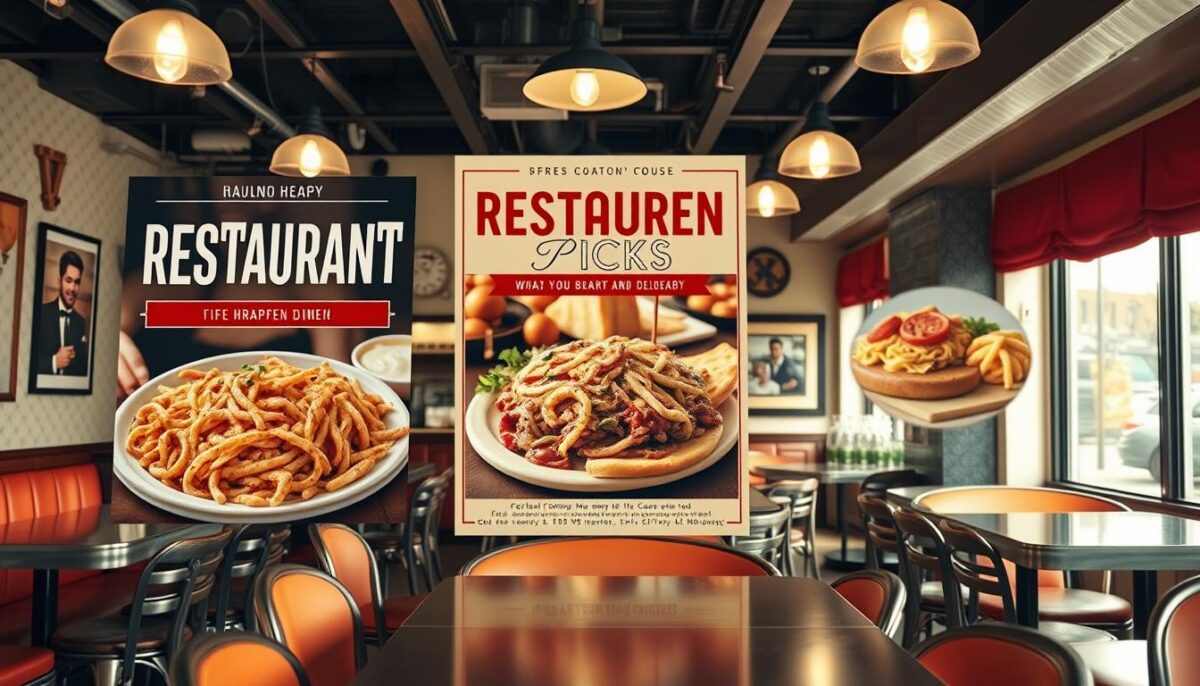
Measuring Your Marketing Success
Understanding the impact of your marketing efforts is key to making informed decisions for your restaurant. To optimize your marketing budget and focus on strategies that deliver the best return on investment, you need to track the right metrics.
Key Metrics to Track
To evaluate the success of your marketing efforts, you should monitor key performance indicators (KPIs) such as foot traffic, average order value, number of orders, and loyalty metrics. These metrics provide insights into customer behavior and the effectiveness of your marketing campaigns.
Tools for Analyzing Marketing Performance
Several tools can help you analyze your marketing performance, including Google Analytics for tracking website traffic and specialized restaurant marketing platforms that offer insights into customer behavior and sales data. By leveraging these tools, you can make data-driven decisions to adjust your marketing strategies.
To maximize your return on investment, it’s essential to regularly review your marketing performance data and adjust your strategies accordingly. This involves setting up systems to track key metrics, using the right tools for analysis, and creating a regular reporting cadence to ensure your marketing efforts are consistently evaluated and optimized over time.
Conclusion: Creating a Sustainable Restaurant Marketing Strategy
As we conclude this comprehensive guide to restaurant marketing, it’s clear that a well-crafted marketing strategy is essential for success. Throughout this guide, we’ve explored various aspects of restaurant marketing, from understanding the fundamentals to measuring marketing success.
A key takeaway is the importance of a comprehensive, multi-channel approach that incorporates social media, email marketing, loyalty programs, and local community engagement. To create a sustainable marketing strategy, it’s crucial to balance short-term promotional tactics with long-term brand building, ensuring that your marketing efforts drive both immediate results and lasting success.
Consistency is vital across all channels, from social media platforms to in-restaurant promotions, to build a strong, recognizable brand. By implementing these strategies incrementally and focusing on approaches that align with your concept, target audience, and business goals, you can create a robust restaurant marketing plan. Effective marketing is an ongoing process that requires regular evaluation and refinement, not a one-time effort.
FAQ
How can I increase foot traffic to my business?
To boost foot traffic, I focus on optimizing my Google Business Profile, creating engaging content on social media platforms, and running targeted ads to attract potential customers.
What are the most effective social media platforms for promoting my menu items?
I find that Instagram and Facebook are ideal for showcasing my new menu items, as they allow me to share high-quality food content and interact with my loyal customers.
How can I measure the return on investment (ROI) of my digital marketing efforts?
To track my ROI, I use tools like Google Analytics to monitor my website traffic, email open rates, and conversion rates, which helps me refine my digital marketing strategy.
What’s the best way to promote my loyalty programs to customers?
I promote my loyalty programs through email campaigns, social media, and in-store promotions, which encourages my customers to participate and rewards their loyalty.
How can I effectively partner with local influencers to promote my brand?
I identify local influencers who align with my brand values and collaborate with them to create sponsored content, which helps me reach new audiences and build credibility.
What’s the importance of having a strong online presence for my business?
Having a strong online presence is crucial, as it allows me to connect with my target audience, showcase my brand, and drive sales through my website and social media channels.
How can I create a successful email marketing campaign?
To create a successful email campaign, I focus on building a strong subscriber list, crafting compelling content, and timing my sends to maximize engagement and conversion rates.
What are some effective ways to promote my business to the local community?
I participate in local events, sponsor community initiatives, and partner with other businesses to promote my brand and build relationships with my target audience.
